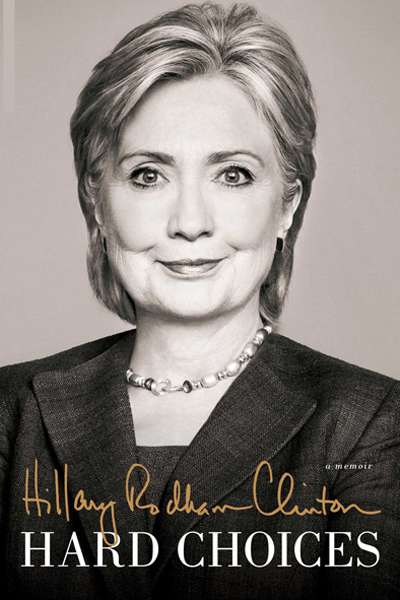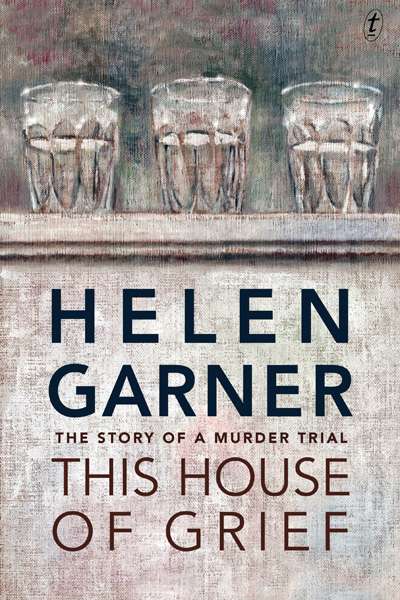Non Fiction
Hard Choices by Hillary Rodham Clinton & HRC by Jonathan Allen and Amie Parnes
It takes a village to run the world, and Hillary knows how to do it. These are the main lessons from Hillary Clinton’s new memoir, Hard Choices. The book traces the finality of her presidential campaign bid in 2008 and her four years as secretary of state. Her analysis of this period provides insights into ...
... (read more)Power Failure: The inside story of climate politics under Rudd and Gillard by Philip Chubb
Speaking about the process of painstakingly researching the ‘terrible mistakes’ made on climate policy by the Rudd and Gillard governments over the six years of their existence, Philip Chubb told an audience at the Wheeler Centre that he ‘almost exhausted [himself] with gloom’. Indeed, this important book, which covers the Icarian trajectory of climate policy through Labor’s years in power, is hardly cheerful. Rather, Chubb hopes that the documentation and analysis of the many poor decisions will help legislators to overcome the challenges of implementing significant but controversial reforms in the future.
... (read more)Gravity by Mary Delahunty & Rudd, Gillard and Beyond by Troy Bramston
Gough Whitlam may not have been one of the Australian Labor Party’s greatest prime ministers, but, since his defenestration by Governor-General John Kerr in 1975, he has been embraced as one of the ALP’s great martyrs. Kerr’s dismissal of the Whitlam Government galvanised the Labor movement. To Labor eyes, Kerr was Pontius Pilate and Whitlam the slain Messiah. New followers – many of them, like Whitlam, university-educated progressives – joined the ALP. New ideas were aired through policy think-tanks such as the Labor Resource Centre, headed by Jenny Macklin, a future federal deputy leader. Out of that angst and rage, a new ALP was forged. Labor was no longer a troglodyte party ruled by factional warlords and sectarian hatreds. It was a modern progressive movement hell-bent on winning and wielding power. After all, as Whitlam famously said to an ALP State Conference in Melbourne in 1967, ‘Only the impotent are pure.’
... (read more)Ben Ball was born in Melbourne in 1970. He grew up in London, New York, and Sydney, and went to school in all of these places. He completed an Arts/Law degree, in Australia, ‘more or less entirely to create the pleasing symmetry B. Ball, BA, LLB’. In the United Kingdom he undertook an M.Phil in Contemporary English Literature. Ball worked in London in publishing for more than a decade, with Bloomsbury, Granta, and Simon & Schuster. He returned to Australia when he began working for Penguin in January 2006. In 2011 he became Penguin’s Publishing Director.
... (read more)One afternoon some three decades or more ago in a stuffy conference room at W.W. Norton & Company, the New York publishing firm where I then worked, the semi-annual sales conference was underway. Assembled were the national sales reps and the marketing team, members of the editorial board, the publicity director and senior publicists, and our president and chairman. A formidable array for editors to face – especially young ones, as I was then – as they presented their upcoming books on the next seasonal list.
One had about three to five minutes tops (though this was often honoured more in the breach, to the exasperation of the audience) to get across to the reps – a fairly jaded lot, but for the most part tolerant of newbies like me – an idea of a book’s content; its main sales points; a run-down of competing titles; any scintillating pre-pub blurbs one had been able to secure; and a conviction-filled guarantee that the author was an absolute certainty to be interviewed on the Today Show.
... (read more)What makes a story compelling? When I was an undergraduate student at Deakin University, I was fortunate enough to be instructed in fiction writing by Gerald Murnane. His key criterion for the worth of a story was its capacity to mark his memory with an enduring image. Over time he used to cull books from his shelves that failed to impress him in this way.
... (read more)The Life of I: The new culture of narcissism by Anne Manne
It is now approaching eighty-five years since Freud published his seminal book, Civilization and Its Discontents (1930). A foundational work of psychoanalytic cultural criticism, Freud’s focus was repression and its cultural consequences. He argued that sexual repression, and its associated guilt, had become the fundamental problem of modern societies. Freud understood society as a kind of trade-off: unfettered sexual pleasure is sacrificed for a sense of collective security. Freedom of the self is limited in the name of social order. ‘Civilization,’ Freud wrote, ‘is a process in the service of Eros, whose purpose is to combine single human individuals, and after that families, then races, peoples and nations, into one great unity.’
... (read more)In August 2013, Robert Farquharson was denied special leave to appeal to the High Court against his conviction for the murder of his three young sons Jai, Tyler, and Bailey, aged ten, seven, and two. This was the final legal chapter in the lengthy story Helen Garner explores in This House of Grief.
Garner begins with the ‘Once’ that prefaces fairy tales – stories we think we know well enough to recite from memory; clear, oracular, and resonant: ‘Once there was a hard-working bloke who lived in a small Victorian country town with his wife and their three young sons.’ One day, ‘out of the blue, his wife told him that she was no longer in love with him’. Transformed by this into ‘the sad husband’, Farquharson packs a suitcase and leaves, saddled with the ‘shit car’ of the two owned by the couple.
... (read more)The Australian sweet tooth and ongoing love of cakes and desserts is evident in two recent publications. Both cover the basics as well as offering more ambitious fare; they are good places to start if this is your thing.
Phillippa Grogan’s eponymous pâtisserie in Melbourne, established in 1994, offers the type of baked goods presented in this publication: breads, cakes and biscuits, quiches and tarts, superbly made and flavoured and stylishly presented. Novel at the time, the business rapidly became a success and has since expanded considerably. As is de rigueur nowadays for cooks, the book of the shop has followed: Phillippa’s Home Baking (Lantern, $49.95 hb, 313 pp, 9781921383311), co-written with Richard Cornish. Baking, more than any other type of cookery except confectionery, requires precision and accuracy, and this is reflected in the succinct, no-nonsense style of the clearly set out recipes and introductions.
... (read more)A Woman of Influence: Science, men and history by Ann Moyal
Ann Moyal was born in 1926, so now she is heading towards her ninetieth birthday. She has already launched a work of autobiography into the world, written in her mid-sixties. But her life did not, then, ‘take a quieter turn’. On the contrary, she tells us, ‘I’d continued to spend my ageing life with passion, involvement, and intensity.’
... (read more)






